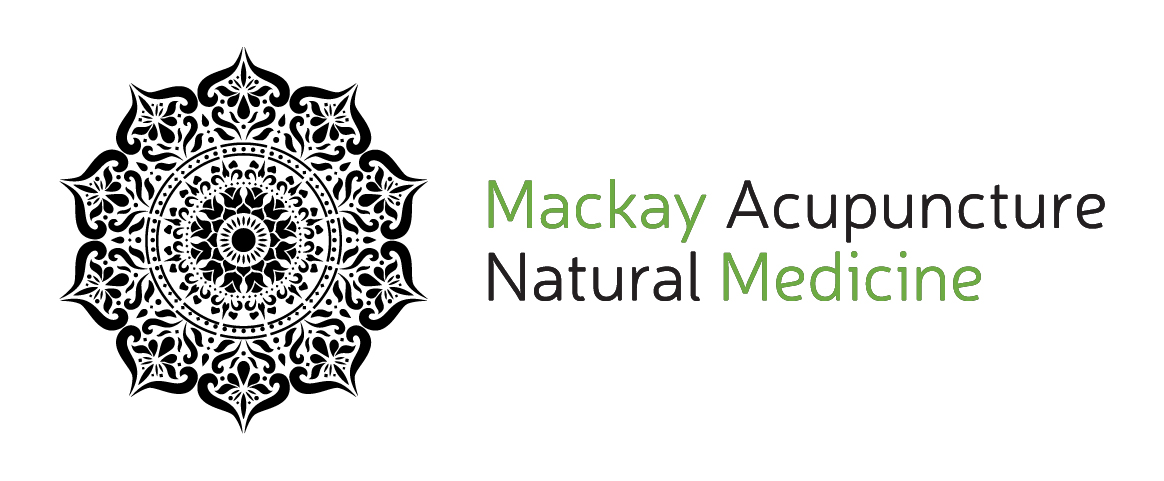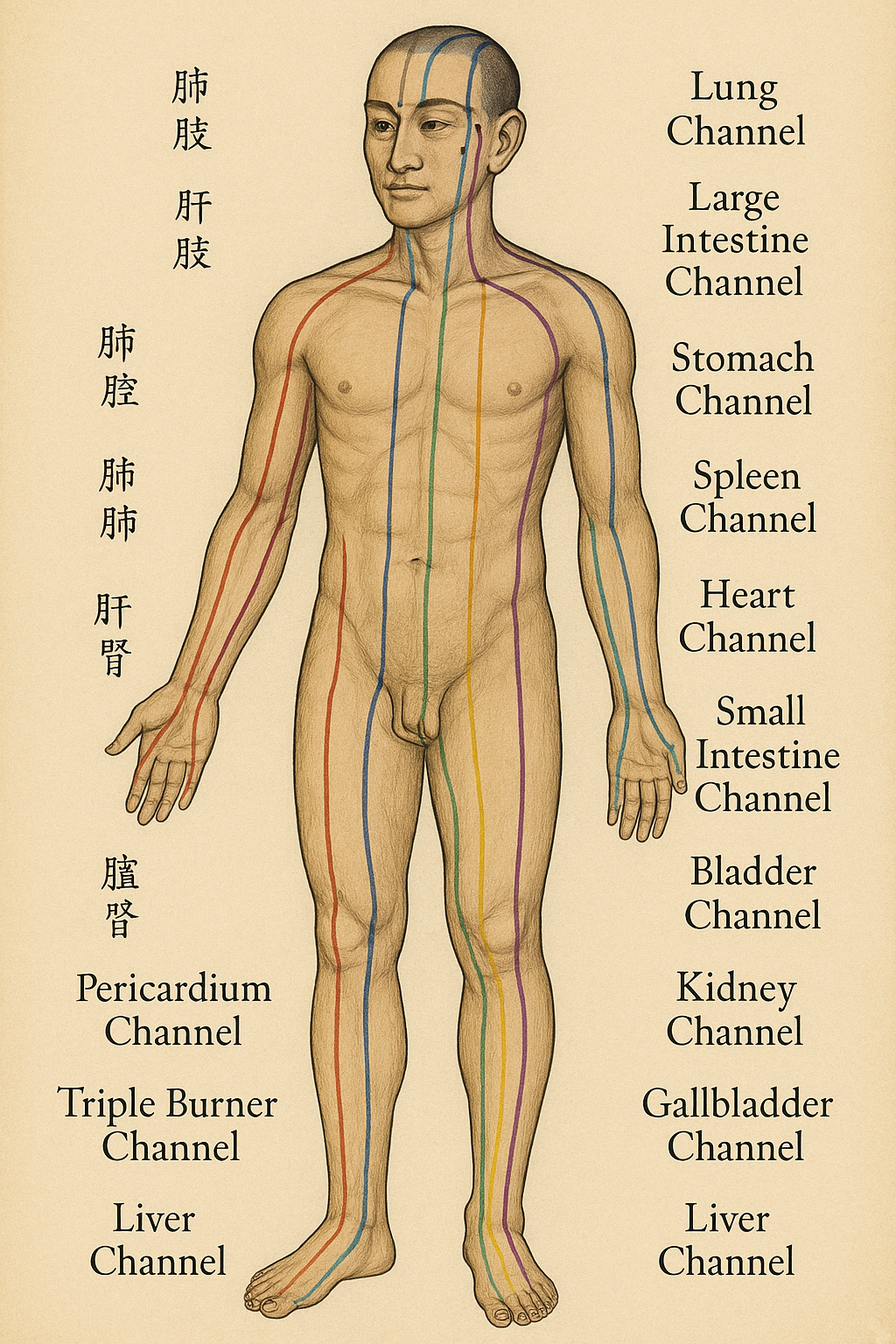Overview
Channel theory (经络理论, jīngluò lǐlùn) is one of the fundamental theoretical frameworks in Traditional Chinese Medicine (TCM). It describes an invisible network of pathways that connect the body’s organs, tissues, and systems, through which vital energy (qi) and blood circulate.
Core Concepts
The Channel System
The channel system consists of:
- Main Channels (正经, zhèng jīng): 12 primary meridians
- Extraordinary Vessels (奇经八脉, qí jīng bā mài): 8 special channels
- Connecting Channels (络脉, luò mài): Secondary pathways
- Muscle Channels (经筋, jīng jīn): Superficial muscular connections
- Cutaneous Regions (皮部, pí bù): Skin zones
The Twelve Main Channels
These are bilateral pathways (24 total) that correspond to the major organ systems:
Yin Channels (Hand):
- Lung (太阴肺经)
- Heart (少阴心经)
- Pericardium (厥阴心包经)
Yang Channels (Hand):
- Large Intestine (阳明大肠经)
- Small Intestine (太阳小肠经)
- Triple Heater (少阳三焦经)
Yin Channels (Foot):
- Spleen (太阴脾经)
- Kidney (少阴肾经)
- Liver (厥阴肝经)
Yang Channels (Foot):
- Stomach (阳明胃经)
- Bladder (太阳膀胱经)
- Gallbladder (少阳胆经)
Functions of the Channel System
1. Transportation
- Circulates qi (vital energy) and blood throughout the body
- Connects interior organs with exterior body surfaces
- Links upper and lower, left and right parts of the body
2. Communication
- Facilitates communication between organs
- Connects physical body with mental/emotional aspects
- Maintains physiological coordination
3. Protection
- Provides defensive qi circulation
- Creates barriers against external pathogenic factors
- Maintains body’s natural immunity
4. Regulation
- Balances yin and yang energies
- Regulates organ functions
- Maintains homeostasis
Acupuncture Points (Acupoints)
Point Categories
- Source Points (原穴): Connect to organ’s original qi
- Connecting Points (络穴): Link paired organ systems
- Cleft Points (郄穴): Used for acute conditions
- Back-Shu Points (背俞穴): On the back, treat corresponding organs
- Front-Mu Points (募穴): On the front, collect organ qi
Point Functions
Acupuncture points serve as:
- Access points to influence channel qi
- Diagnostic locations for organ health
- Treatment sites for various conditions
- Energetic gateways for therapeutic intervention
Clinical Applications
Diagnosis
Practitioners use channel theory to:
- Trace symptom patterns along meridian pathways
- Identify organ system imbalances
- Understand how local symptoms reflect systemic issues
- Determine root causes of disease
Treatment Strategies
Channel theory guides:
- Acupuncture: Needle insertion at specific points
- Moxibustion: Warming therapy at channel points
- Massage (Tuina): Manipulation along channel pathways
- Herbal Medicine: Supporting channel and organ functions
- Qigong: Exercises to cultivate and move qi
Common Treatment Principles
- Tonification: Strengthening weak channels/organs
- Sedation: Calming overactive channels/organs
- Regulation: Balancing qi flow and distribution
- Unblocking: Clearing channel obstructions
Modern Understanding
Research Perspectives
Contemporary research explores:
- Neurological correlations with meridian pathways
- Fascial connections that may correspond to channels
- Bioelectrical properties of acupuncture points
- Physiological mechanisms of acupuncture effects
Integration with Modern Medicine
Channel theory helps bridge:
- Traditional diagnostic methods with modern assessment
- Holistic treatment approaches with targeted interventions
- Preventive care with therapeutic treatment
- Mind-body connections in healing
Practical Considerations
Channel Pathways
Each channel follows specific anatomical routes:
- Internal pathways connecting to organs
- External pathways accessible for treatment
- Bilateral symmetry with potential imbalances
- Connections between related organ systems
Qi Flow Patterns
- Normal Flow: Smooth, balanced circulation
- Deficient Flow: Insufficient qi in channels
- Excessive Flow: Overabundance causing symptoms
- Stagnant Flow: Blocked or sluggish movement
Treatment Timing
Channel theory considers:
- Circadian Rhythms: Optimal treatment times for each organ
- Seasonal Influences: Adjusting treatments for environmental changes
- Constitutional Factors: Individual variations in channel strength
- Pathological Patterns: Disease-specific channel involvement
Conclusion
Channel theory provides a comprehensive framework for understanding health and disease in TCM. It offers both a theoretical foundation for diagnosis and treatment, and practical guidelines for therapeutic intervention. While rooted in ancient Chinese philosophy and medicine, channel theory continues to evolve through clinical practice and modern research, maintaining its relevance in contemporary integrative healthcare approaches.


